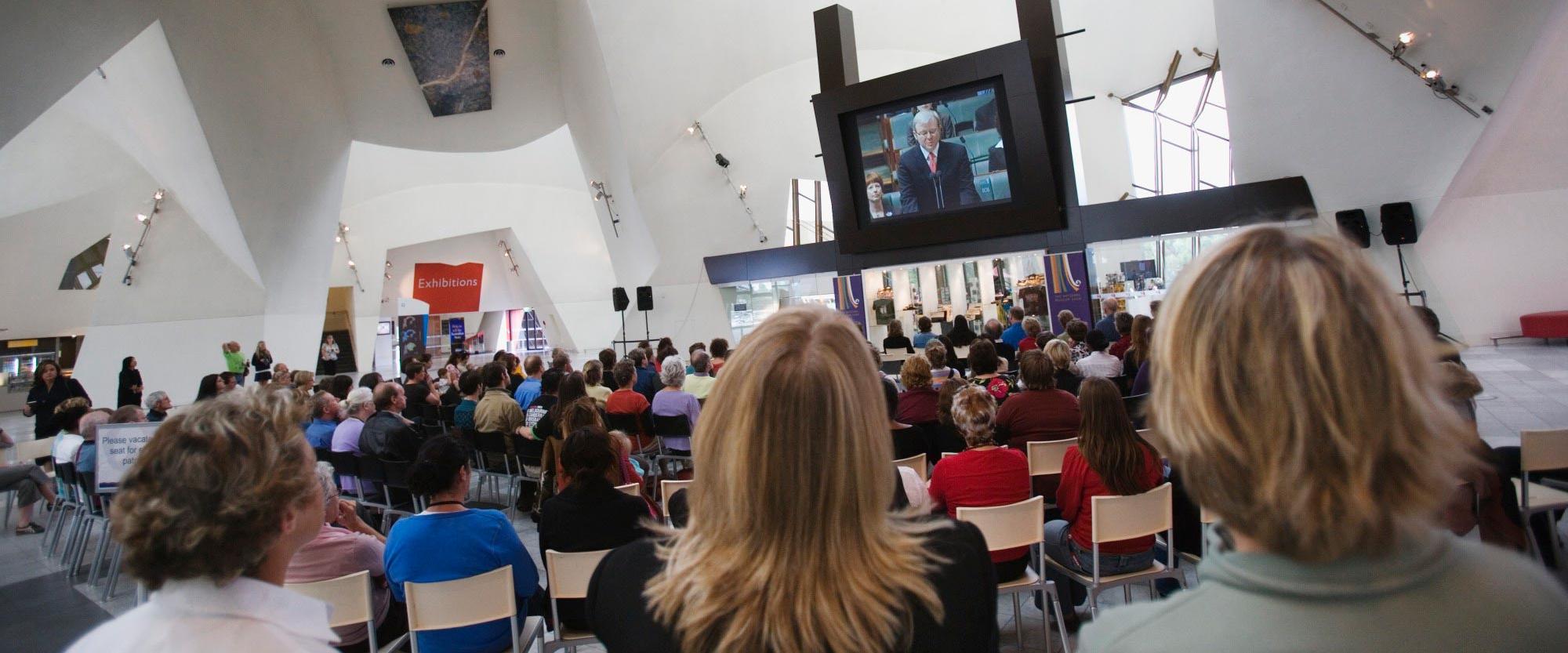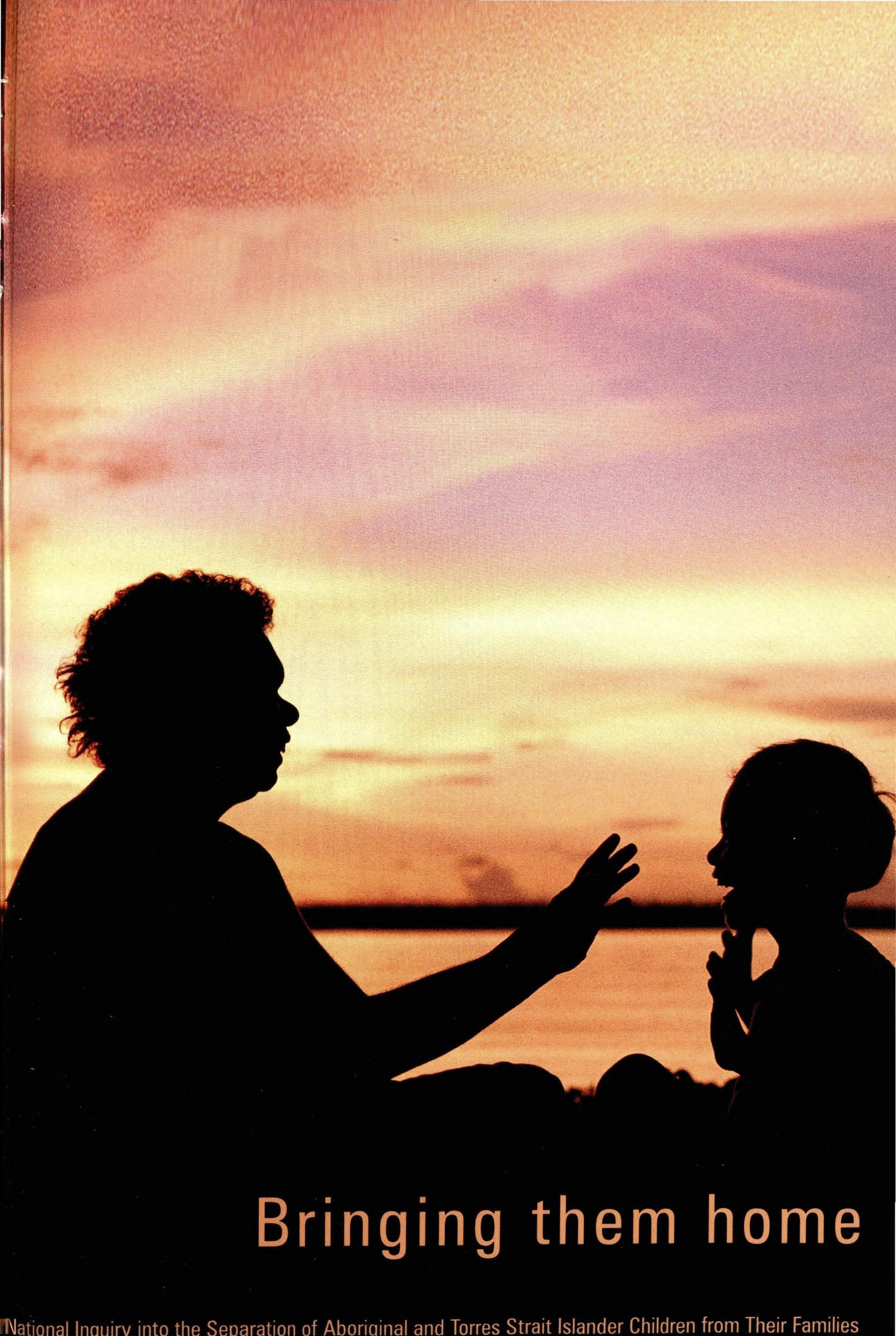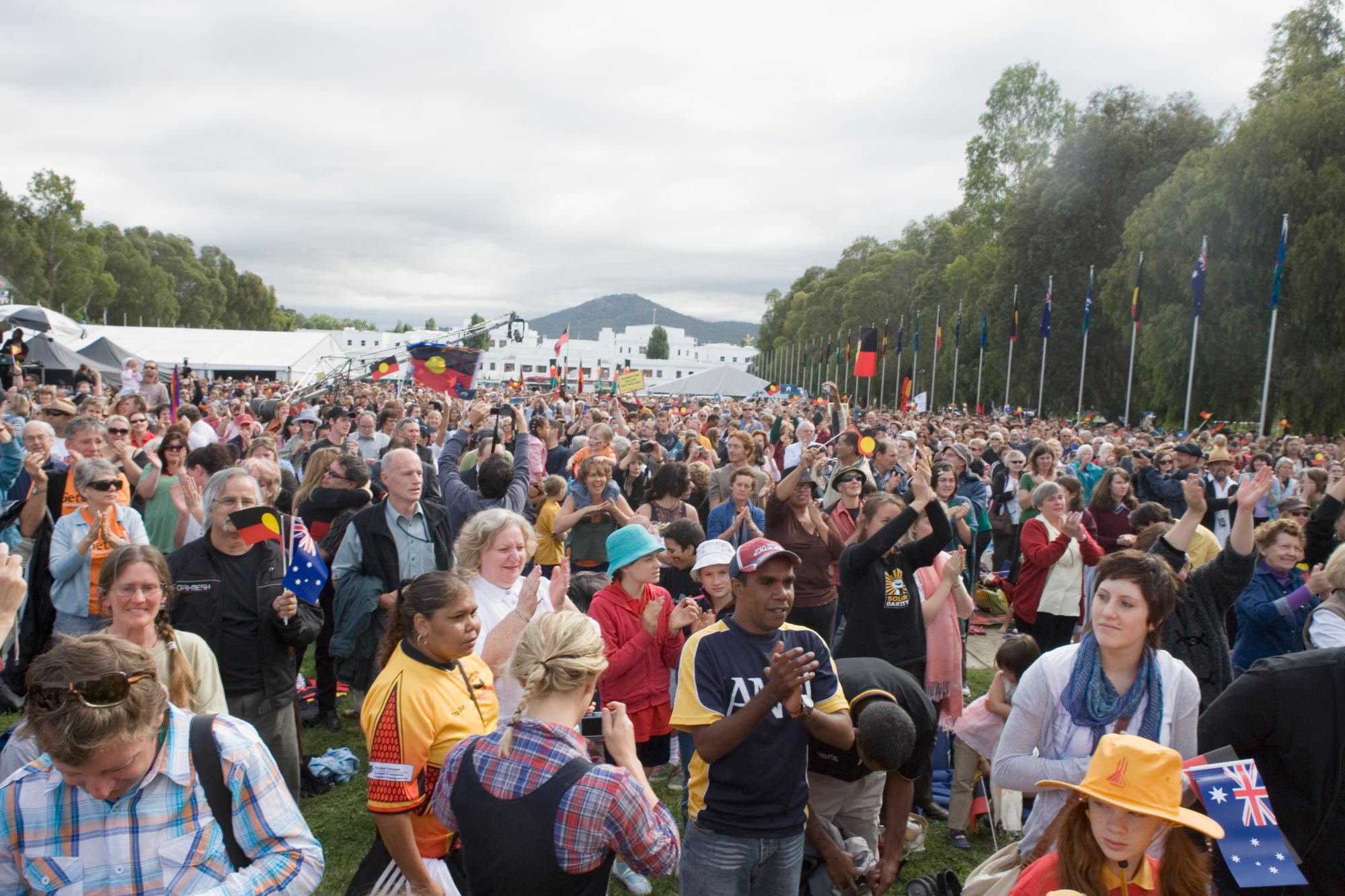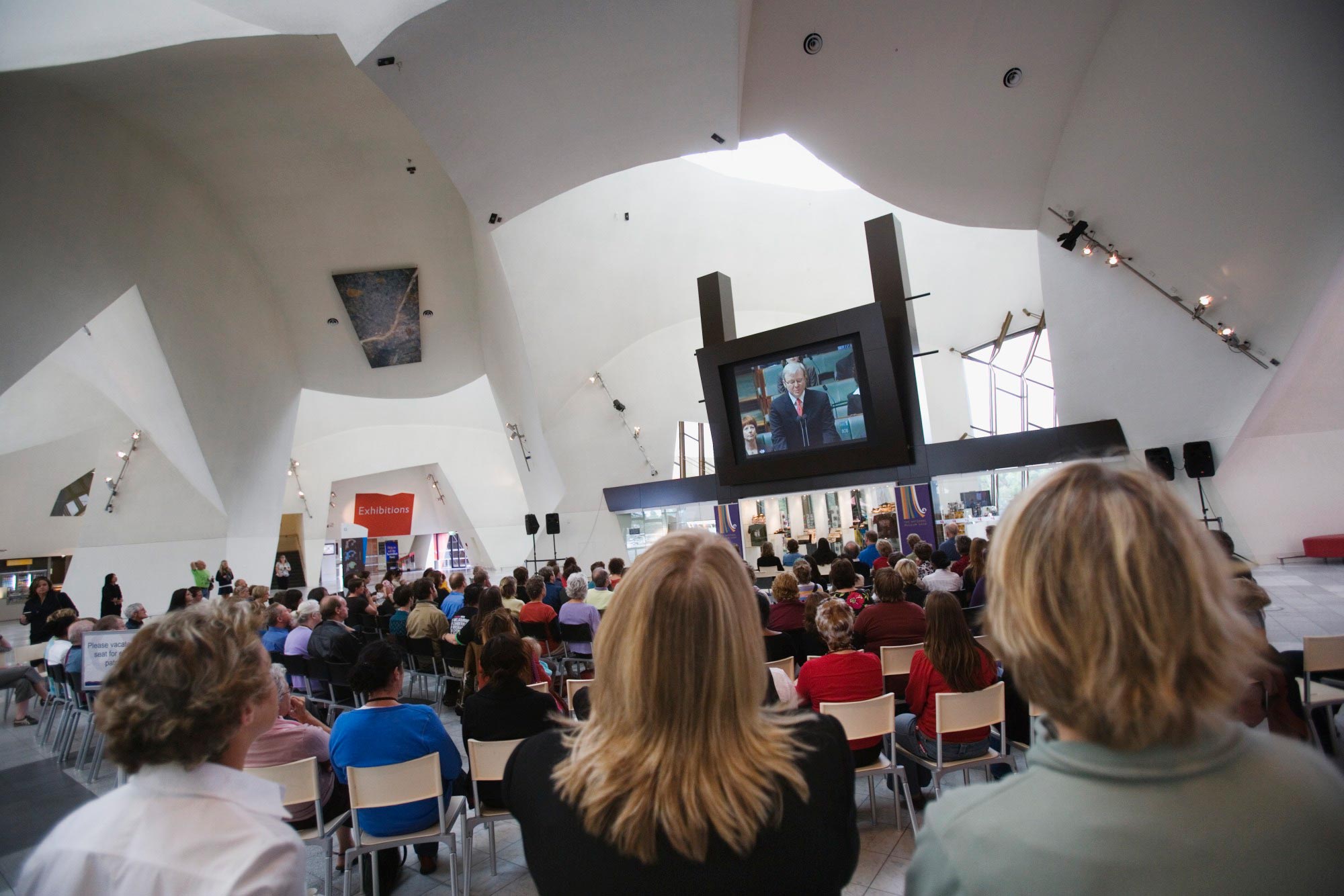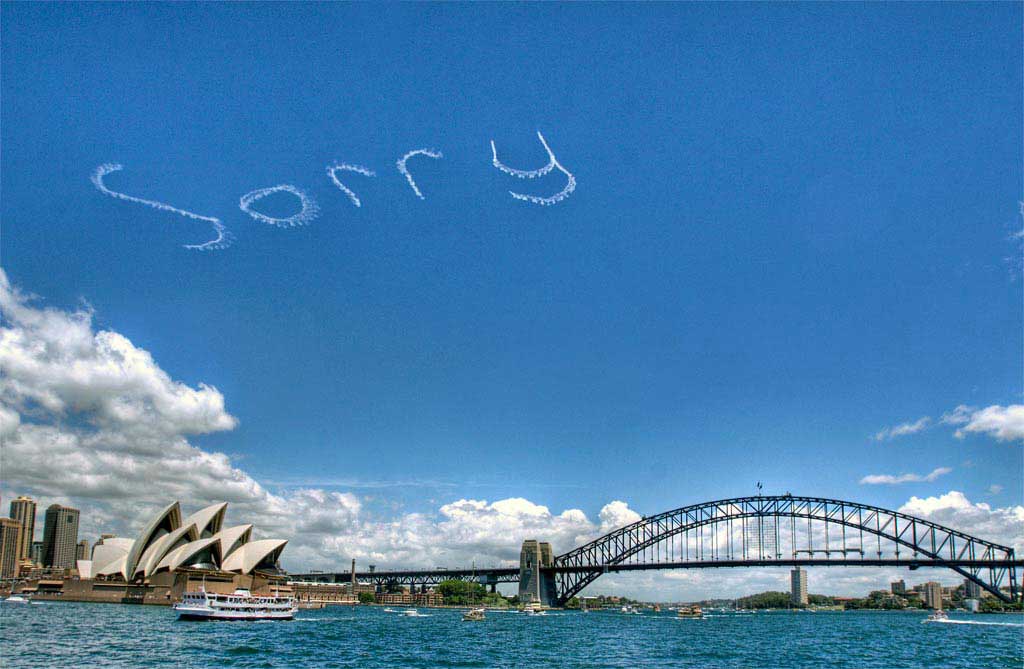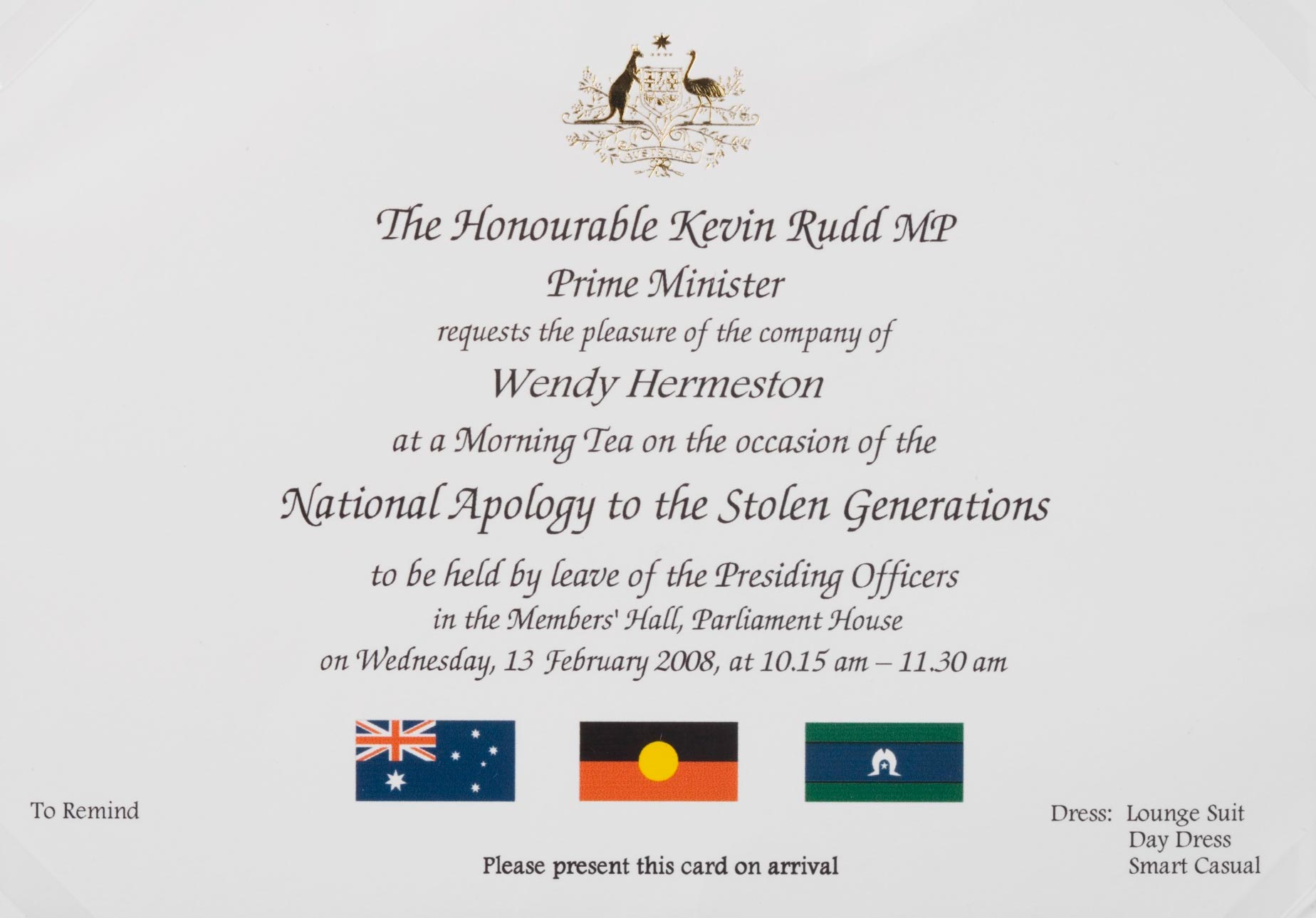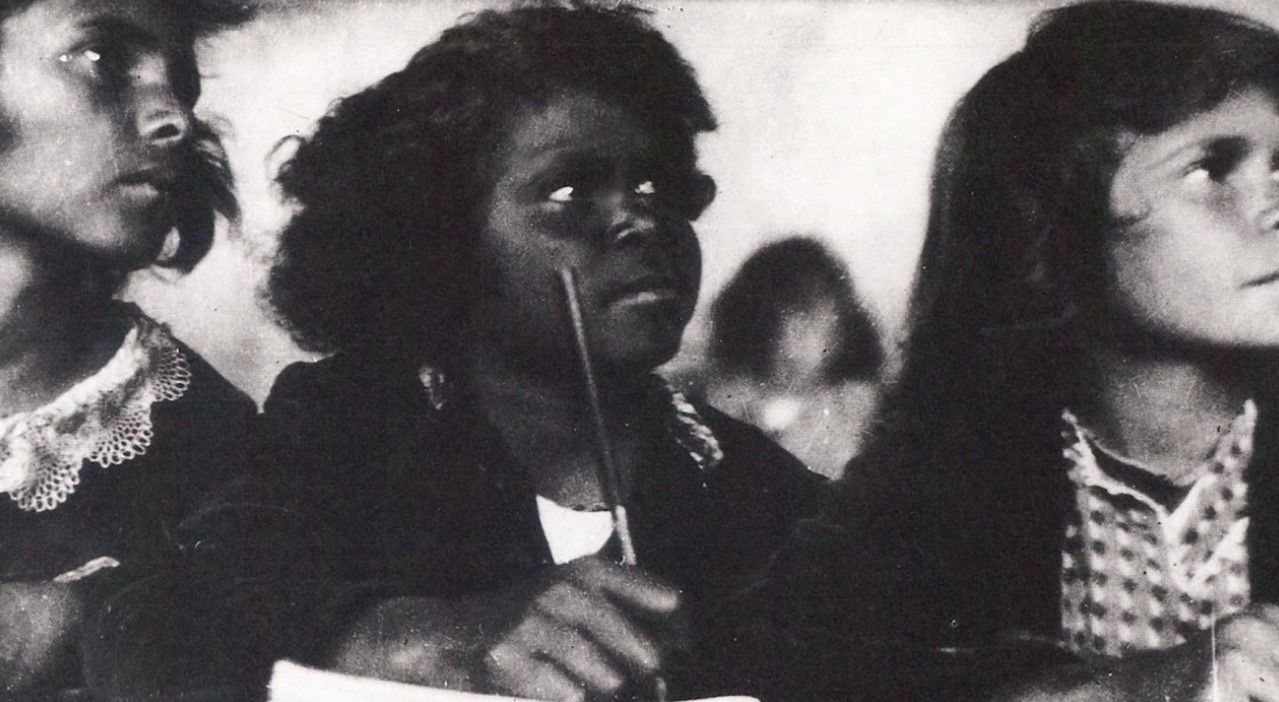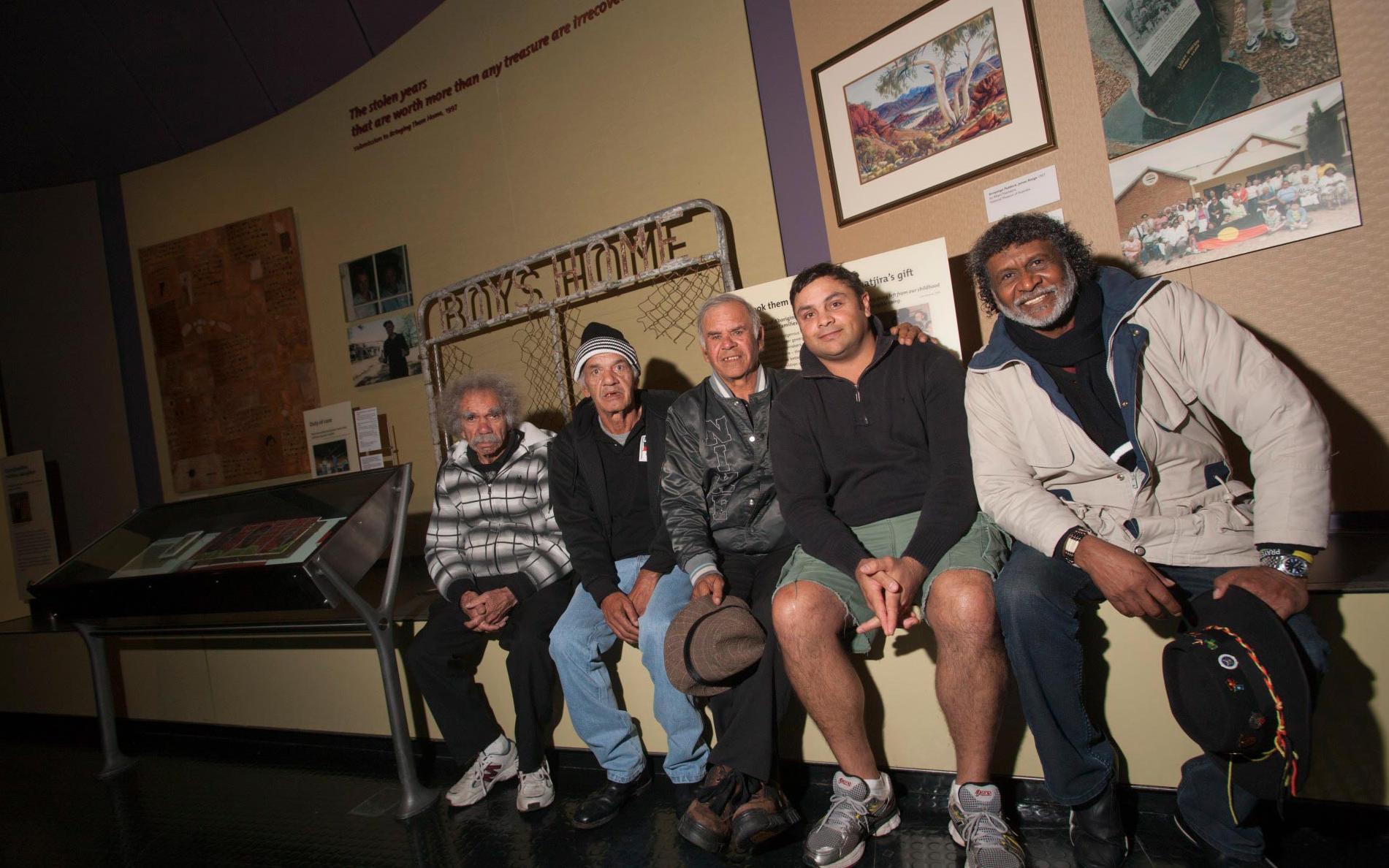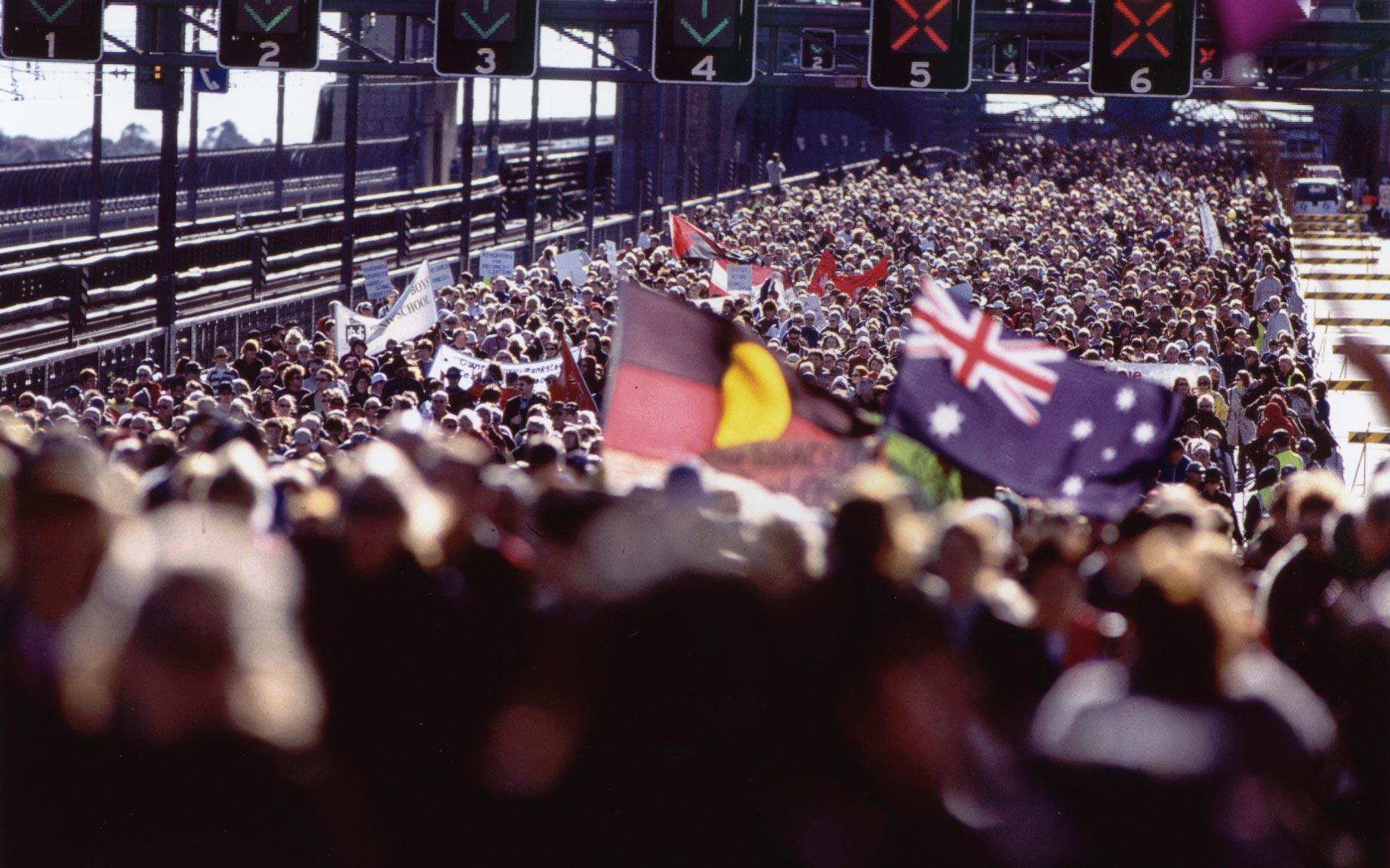‘Bringing them home’
2008: National apology to the Stolen Generations
‘Bringing them home’
2008: National apology to the Stolen Generations
WARNING: This page contains some difficult and potentially distressing content.
In a snapshot
On 13 February 2008 Prime Minister Kevin Rudd made a formal apology to Australia’s Stolen Generations, those Aboriginal and Torres Strait Islander people who had been removed as children from their families and their culture. Although the apology could not take away the pain of the past, many felt that it was a necessary first step in the healing process.
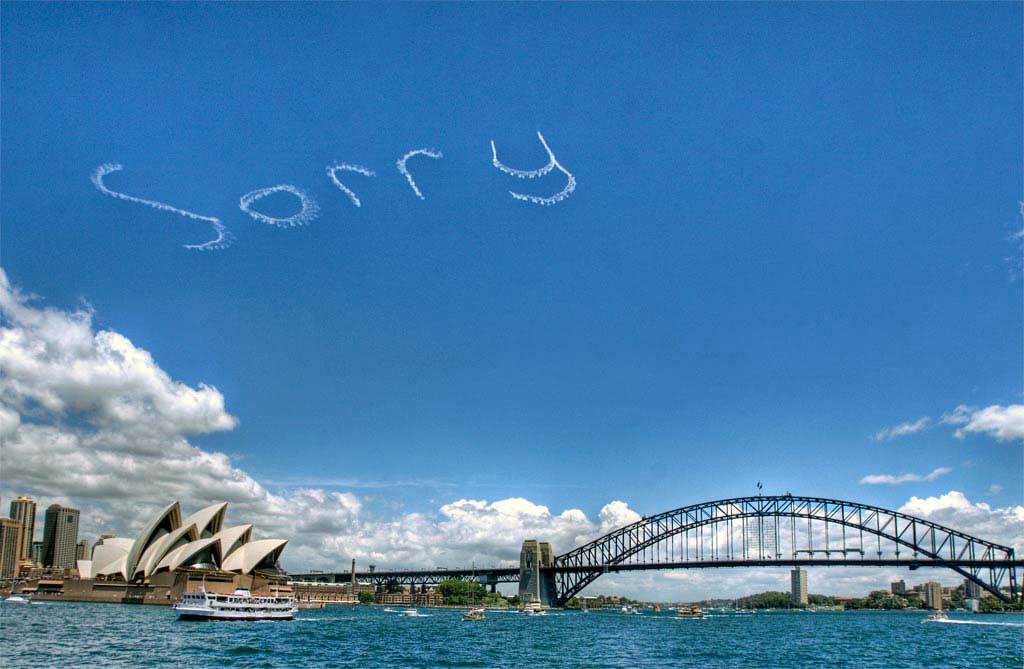
 Can you find out?
Can you find out?
1. Who are the Stolen Generations?
2. What was a major recommendation of the Bringing Them Home report?
3. Which prime minister delivered the national apology to the Stolen Generations in 2008?
Who are the Stolen Generations?
From the early 1900s Australia’s states and territories introduced laws that allowed government agencies to take Aboriginal and Torres Strait Islander children away from their families. Tens of thousands of children were taken away across Australia. They are now known as the Stolen Generations.
Children who were taken away from their families were more likely to experience abuse and to suffer from depression and other mental illnesses. Also because they were almost always taught to reject their Aboriginal and Torres Strait Islander heritage, they couldn’t keep their links to their land or be part of the cultural and spiritual life of their Indigenous communities.
Many families affected by the forced removal of children are still deeply traumatised.
‘We apologise for the laws and policies of successive Parliaments and governments that have inflicted profound grief, suffering and loss on these our fellow Australians. We apologise especially for the removal of Aboriginal and Torres Strait Islander children from their families, their communities and their country.’
What was the Bringing Them Home report?
The journey to a national apology to the Stolen Generations began in 1995, with an inquiry into the forced separation of Aboriginal and Torres Strait Islander children from their families by past governments.
The inquiry heard evidence in person from 535 Aboriginal and Torres Strait Islander people, and received hundreds of letters and testimonies from other people. It also recognised that many people could have provided evidence but didn’t do so because they were unable to travel, uncomfortable with the process or still too frightened or traumatised to speak of their experiences.
Below are two examples of evidence given to the inquiry by Aboriginal and Torres Strait Islander people.
Paul’s mother was tricked into putting him into a home while she recovered from a serious illness. Paul was then adopted without his mother’s consent. When his adoptive family rejected him, Paul was placed in an orphanage. He was then placed with an abusive foster family. In his submission to the inquiry, Paul said:
‘My Mother never gave up trying to locate me. She wrote many letters to the State Welfare Authorities, pleading with them to give her son back. Birthday and Christmas cards were sent care of the Welfare Department. All these letters were shelved. The State Welfare Department treated my Mother like dirt, and with utter contempt, as if she never existed.’
Rose, whose siblings were taken away in 1958 when she was nine, told of the difficulties of trying to reunite her family members later in life:
‘After about 14 years my [eldest] brother came to live with us. One sister found us through the Salvation Army about 16 years later. Then my [baby] brother … who died last year … was caught up in the system, was like a lost street kid and was bashed by the police in Melbourne a couple of years ago. [He] ended up with a tumour on the brain and was never the same again. My second sister … my family didn't see for 27 years. What could anyone do now to make up for those 27 years of not having their sister a part of their life? [It’s] a terrible big hole in my heart that will never be filled … We all are in contact with each other now and we try to make up for all those lost years. But something’s missing.’
The inquiry’s final report was released in 1997, it was called Bringing Them Home. It included 54 recommendations. Two of the recommendations called on all Australian governments, police forces, churches and non-government agencies to make an apology to members of the Stolen Generations.
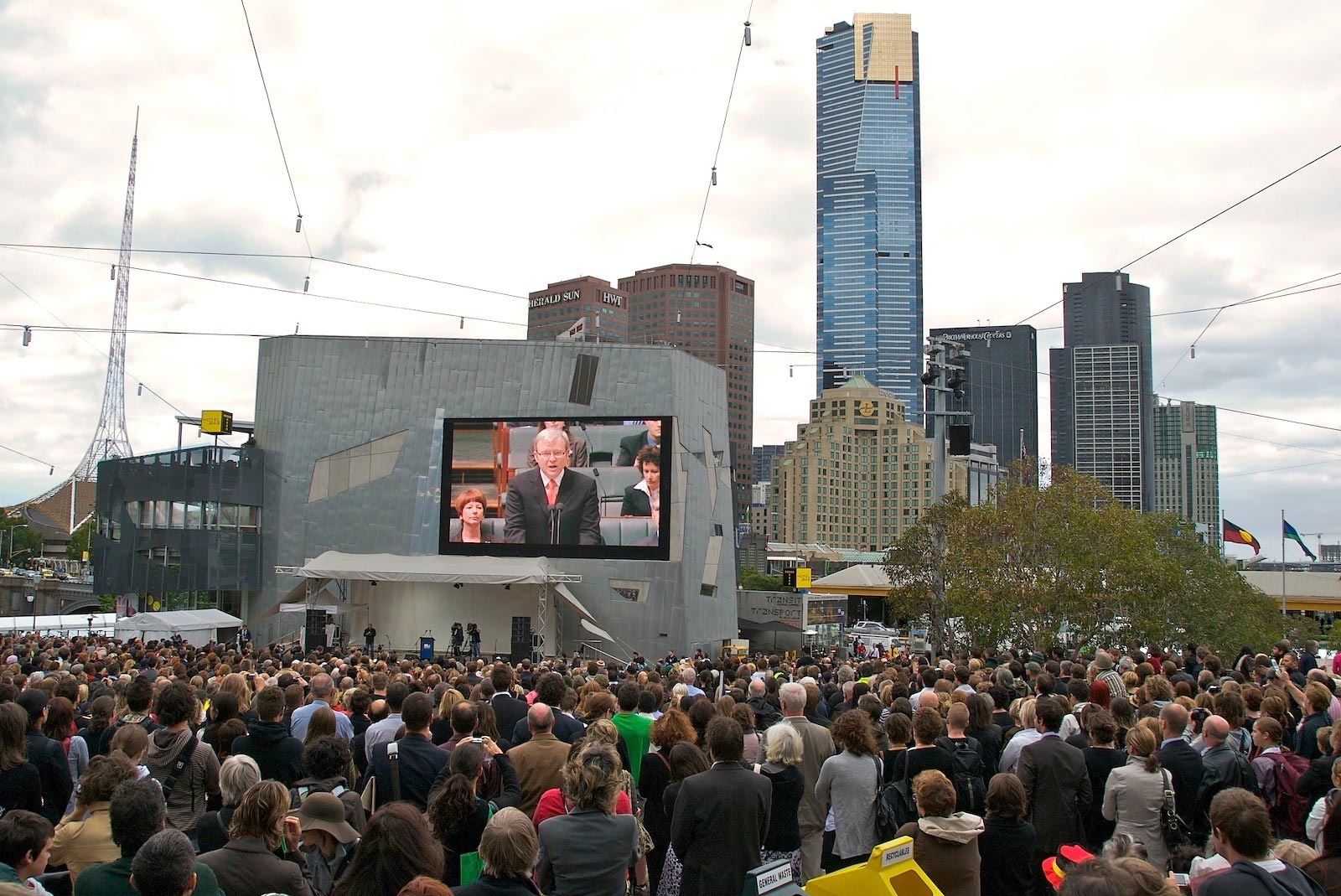
When did the national apology take place?
By 2001 all eight Australian state and territory governments had made apologies. Only the Australian Government, under Liberal Prime Minister John Howard, did not do so.
In response to this, Aboriginal and Torres Strait Islander people and their supporters began to spread awareness and build support in the Australian community for a national apology. The National Sorry Day Committee organised many different events over the years, including the Walk for Reconciliation across the Sydney Harbour Bridge in 2000.
In 2007 the Labor Party under Kevin Rudd won the federal election. This new government supported making an apology to the Stolen Generations.
The apology was the first item of business when the new parliament opened in 2008. Thousands of people gathered in Canberra for the event, and it was also broadcast across the country.
Although the apology could not take away the pain of the past, many felt that it was a necessary first step in the healing process. Dr Tom Calma, the Aboriginal and Torres Strait Islander Social Justice Commissioner at the time, spoke for many when he said:
Research Task
Find out when each of the state and territory parliaments made their apology to the Stolen Generations. Draw a timeline to show your results.
Research Task
Do some research to find out which other major recommendations of the Bringing Them Home report have been put in place.
‘Through one direct act, the parliament has acknowledged the existence and the impacts of past policies and practices of forcibly removing Indigenous children from their families, and by doing so has paid respect to the Stolen Generations for their suffering and their loss, and for their resilience, and ultimately, for their dignity.’
Read a longer version of this Defining Moment on the National Museum of Australia’s website.
 What did you learn?
What did you learn?
1. Who are the Stolen Generations?
2. What was a major recommendation of the Bringing Them Home report?
3. Which prime minister delivered the national apology to the Stolen Generations in 2008?






